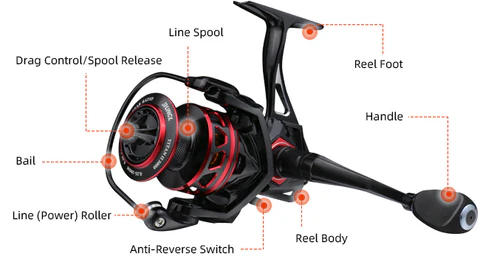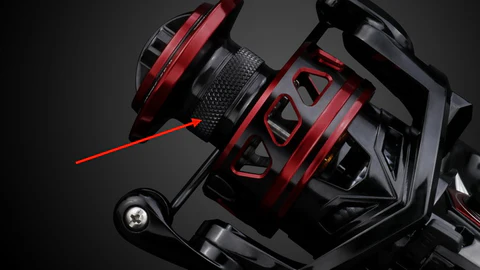Spinning reels are popular for their ease of use. Unlike baitcasting reels, they have an open-faced spool, reducing the risk of tangled lines. This makes them perfect for beginner anglers. Let’s dive into the eight key parts of a spinning reel and understand their functions:
-
Reel Foot: This securely attaches the reel to the underside of your spinning rod.
-
Handle: Most spinning reel handles are reversible. You can easily switch them from left-handed to right-handed configurations for personalized comfort. Rotating the handle turns the spool and retrieves your line.
-
Reel Body: The body is typically made of plastic, aluminum, or graphite (or sometimes a combination). Aluminum offers superior strength and rigidity, while graphite is lighter. Plastic reels are generally more affordable and suitable for younger anglers. For freshwater fishing, aluminum is a popular choice. However, saltwater environments demand corrosion resistance, making graphite a better option.
-
Anti-Reverse Switch: This small lever, usually located on the bottom of the reel, can be switched on or off. With the switch “on,” the spool locks, preventing it from spinning backwards. This is helpful for adjusting line tension while fighting a fish without needing to adjust the drag.

-
Line Spool: This is where your fishing line (braided, monofilament, or fluorocarbon) resides. The spool size and model determine the line capacity. Generally, smaller reels have lower line capacity. Many modern reels are “braid ready,” meaning you can tie braided line directly to the spool without needing backing or a special knot to prevent slipping.
-
Drag Control/Spool Release: The drag system acts like a brake, applying friction to the spool when a fish is hooked. This prevents the line from snapping. Most spinning reels have a drag knob on top of the spool for adjusting tension. Turning the knob loosens or tightens the drag. This knob also allows you to unscrew and remove the spool for replacement.
-
Line Roller: This guides the line as the reel retrieves or releases line.
-
Bail: This multifunctional component acts as a casting trigger and line guide. To cast, open the bail to allow line to flow freely. To retrieve your line, close the bail by turning the handle – it should automatically close. The bail also ensures your line is spooled neatly onto the reel.

Spinning reels offer a user-friendly introduction to the exciting world of fishing. By understanding these essential parts, you’ll be well on your way to mastering your spinning reel and making the most of your fishing adventures.
Images/Source: Runcl





